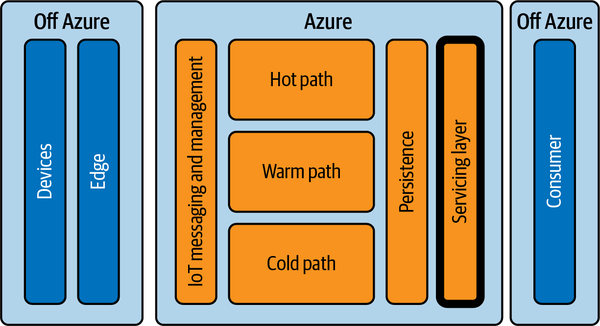Chapter 11. The Servicing Layer
The last few chapters have taken you down the hot, cold, and warm data paths. These paths all revolved around what it takes to process data from its raw form as it comes off devices into something usable by consumers of the data. Between the consumers, though, lives the servicing layer in the IoT Landscape, as shown in Figure 11-1, and it’s all about exposing and delivering processed data to the consumers. The layer includes light processing capabilities, integrations, and transformation technologies that make the data usable. It may also have some data cleansing, validation, and enrichment to improve data quality. Technically speaking, the servicing layer uses delivery mechanisms like webhooks and server-side push technologies like SignalR or Azure Web PubSub. Many times, APIs become a big part of this layer. For some other more traditional integrations, the layer may provide common protocols for downloading datasets.

Figure 11-1. The servicing layer of the IoT Landscape
The servicing layer in data architecture provides abstractions between the data storage and processing layer and the presentation layer. In programming terms, it’s effectively a façade pattern. The façade provides an abstraction that masks some of the complexities of a system. This pattern provides simplified access to anyone wanting to consume the data by masking the tons of ...
Get Architecting IoT Solutions on Azure now with the O’Reilly learning platform.
O’Reilly members experience books, live events, courses curated by job role, and more from O’Reilly and nearly 200 top publishers.

